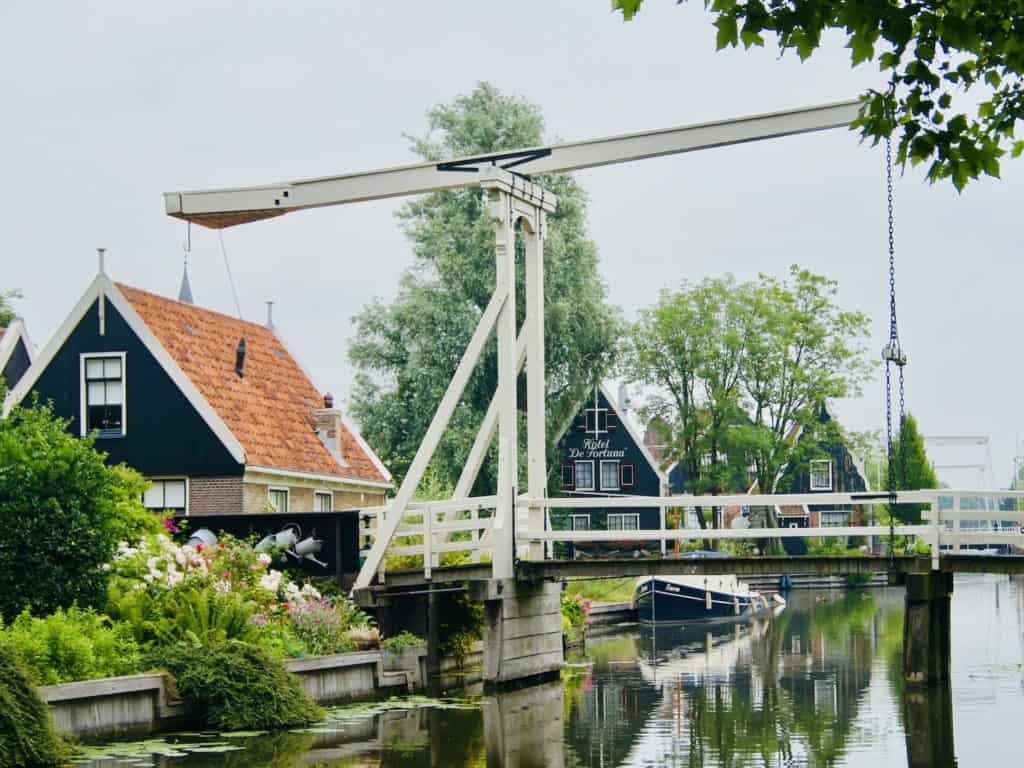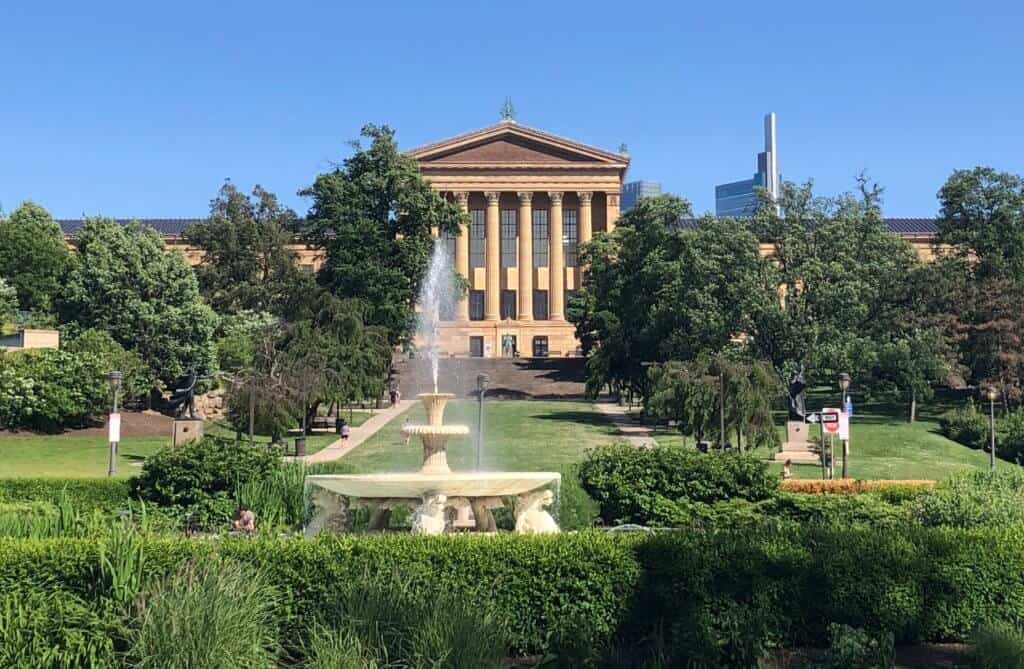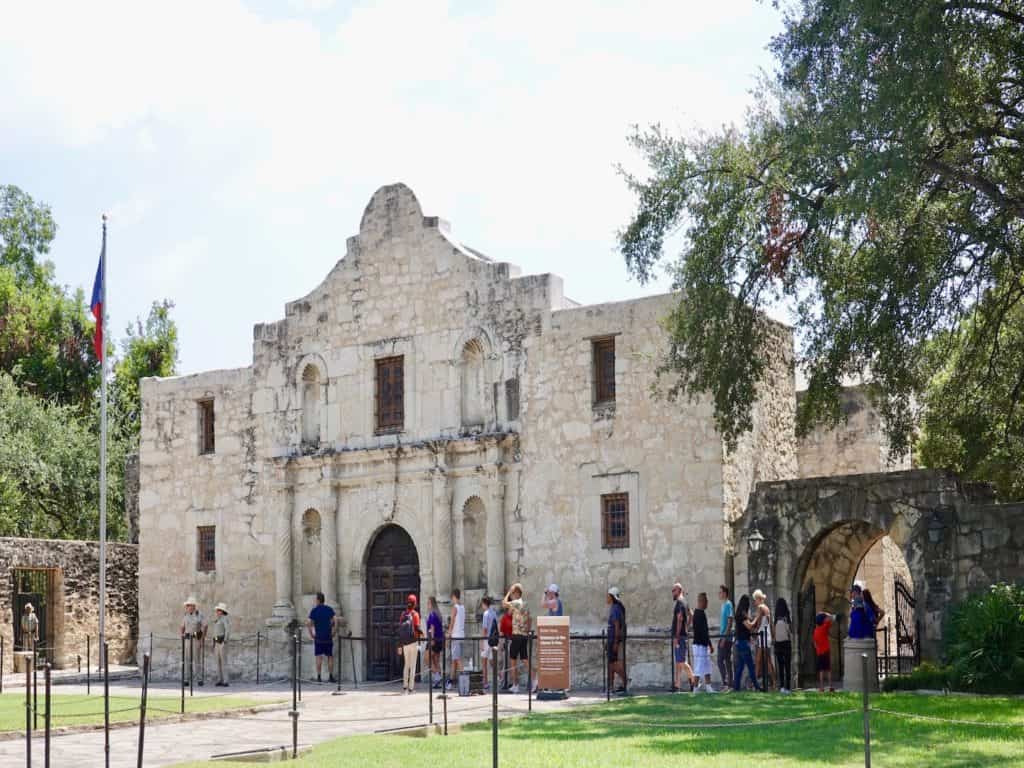A visit to Gettysburg allows you to travel back in time to 1863 and understand what happened during the Battle of Gettysburg. There’s plenty to visit and see in town, so you have lots of options. In addition to the spots that are open year-round, check out the special events and reenactments at specific times during the year.
President Abraham Lincoln stated, when delivering the Gettysburg Address, “The world will little note, nor long remember what we say here, but it can never forget what they did here.” Lincoln had come to Gettysburg in November 1863, four months after the fighting concluded, to honor the men who died in fierce fighting. He delivered the Gettysburg Address when dedicating the Soldiers’ National Cemetery, now known as the Gettysburg National Cemetery (which you can visit today). There are lots of things to ponder when visiting Gettysburg, and my husband Pop wrote an interesting perspective about visiting the Gettysburg battlefields.
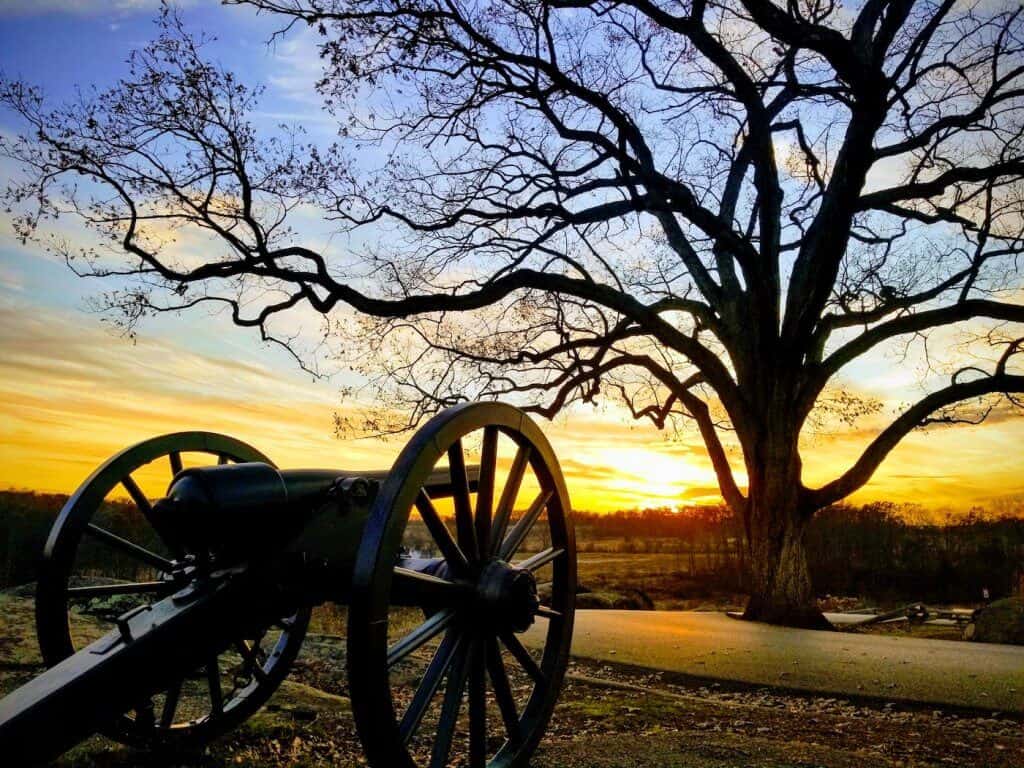
Historical Overview of Gettysburg
The Union Army of the North, commanded by General George Meade, and the Confederate Army of the South, headed by General Robert E. Lee, battled each other for dominance in the fractured country that the U.S. had become. Over 160,000 soldiers made up the two armies. The battle lasted three days — from July 1-3, 1863. In those three days of battle at Gettysburg alone, there were around 51,000 casualties (dead, wounded, captured, and missing). The high number of the dead made this the bloodiest battle of the Civil War. The victories won by the north sent the retreating Confederates south on July 4.
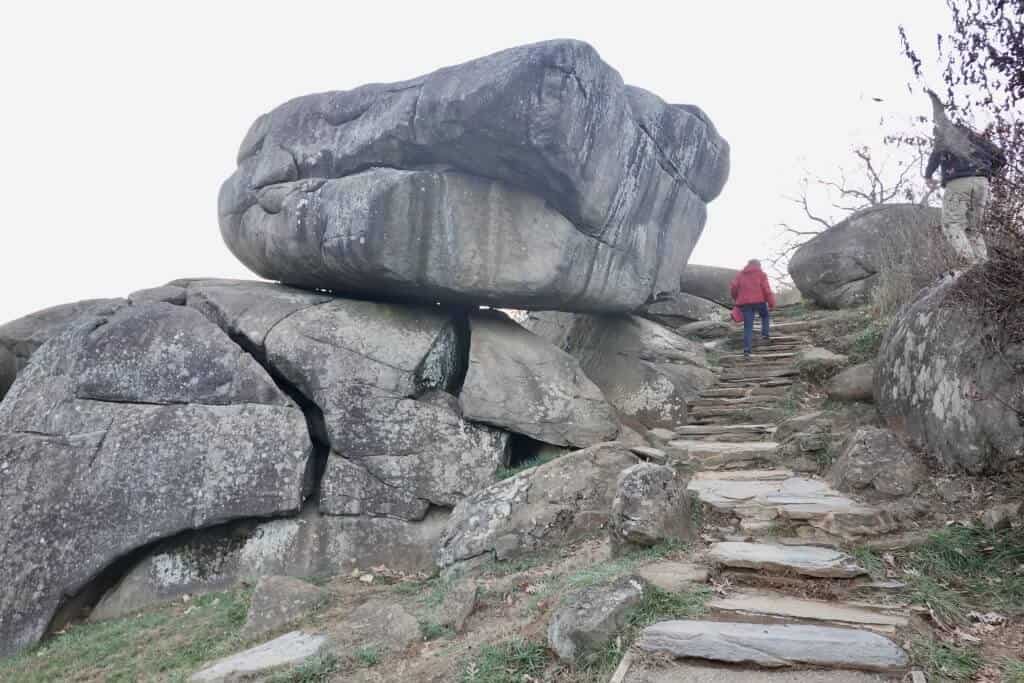
Did you know?
- Gettysburg is named after Samuel Gettys, a settler and tavern owner, and was founded in 1786. The locals actually pronounce the town GETT-es-burg (not GETT-eeez-burg) because that is how Mr. Gettys pronounced his name: GETT-es.
- Abraham Lincoln won the presidency in 1860, in part, because most American men (and, thus, voters) lived in the north. Many of the men in the north were adamant about not allowing slavery to spread into the western territories of America.
- The Civil War army had three divisions: cavalry (soldiers on horseback working to find the enemy, report where they were, and hold off an attack, if possible), infantry (soldiers walking on foot), and artillery (soldiers who supported the infantry by firing into the enemy’s line to break up their charges).
- Southern cavalrymen usually provided their own horses and related equipment whereas northern cavalrymen were provided with the same.
- The ten roads leading into the town of Gettysburg provided relatively easy pathways for the diverging armies to advance from their previous locations and, then, face each other in battle.
- Civilians helped in the war effort. For example, Elizabeth Thorn guided a Union general through town. He had stopped at Elizabeth’s house looking for a man to do so, but only Elizabeth was home with her parents and children. She opted to help him.
- On high ground, signal stations were used to communicate with one’s military unit. Signals consisted of flags, torches, and flares.
- Gettysburg’s terrain — low mountain ridges and hilltops — helped troops hide from their enemies and gave some a military advantage.
- President Dwight D. Eisenhower purchased a 189-acre farm in Gettysburg in 1950 for $40,000. It was his retirement home and can be visited today.
- President John F. Kennedy toured the battlefield in the spring of 1963. He was invited to speak at the 100th anniversary of the Gettysburg Address in November, but he had plans in Texas on that date, so he declined. President Eisenhower made the commemorative remarks instead on November 19, 1963. President Kennedy was killed in Dallas just three days later — on November 22.
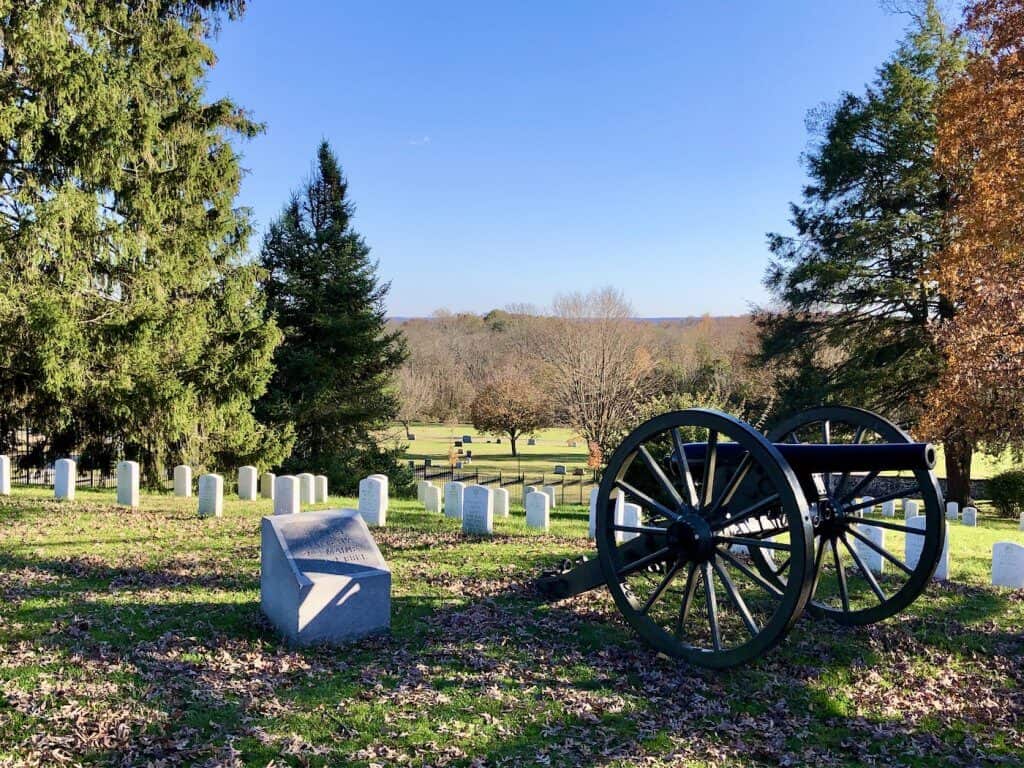
Different Perspectives on the Battle
In Gettysburg, you can learn more about the war from various viewpoints:
- the Union military,
- the Confederate military, and the
- civilians:
- townspeople who were surrounded by warfare, whose homes became resting places and/or infirmaries for soldiers,
- people who came to provide aid to the wounded,
- family members of the soldiers who came to search for their loved ones after the battle ended, and
- people who dug graves to bury the dead left on the battlefield after the fighting concluded.
There are plenty of other ways to learn more about the important role Gettysburg has played in our nation’s history.
Gettysburg Battlefield Tour
My family has made several visits to Gettysburg over the years, and there are plenty of options to learn more about the three bloody days when the battle took place.
Start at the Gettysburg National Military Museum & Visitor Center. This is where you can talk with guides who can help you plan your visit for free.
Your touring options are:
- take the Battlefield Bus Tour where you will be driven through the battlefield,
- take the Guided Battlefield Tour by Car (and have a licensed battlefield guide explain the sites in your car), or
- tour the Auto Tour battlefield in your car using the excellent Gettysburg Guide or the much more detailed Gettysburg Field Guide (with narrations on CD and on sale in the museum gift shop).
- hike or walk trails throughout the battlefield sites. Drive your car to a spot along the battlefield route and then walk the very ground soldiers did so long ago.
- go on a horseback or bike ride through the battlefields.
Also, the U.S. National Park Service has an excellent Gettysburg guide to the battle and the battlefield with a detailed map for driving or hiking through the battlefield. Check online for more information to help you plan your visit.
Why We Chose the Auto Tour
We opted to go it on our own, and it was a good choice for us. As we drove, we listened to the CDs that come with the Gettysburg Field Guide which provides an in-depth narration of what occurred at each point along the route. Also, we stopped when we wanted to get out and explore a place a little more, climb one of the observation towers, or view some of the more than 1,300 monuments along the way. We particularly liked our stop at Little Round Top, the place where the Union forces held off a Confederate attack on the second day of the three-day battle in Gettysburg. There are hiking trails to explore at Little Round Top and great vistas to take in.
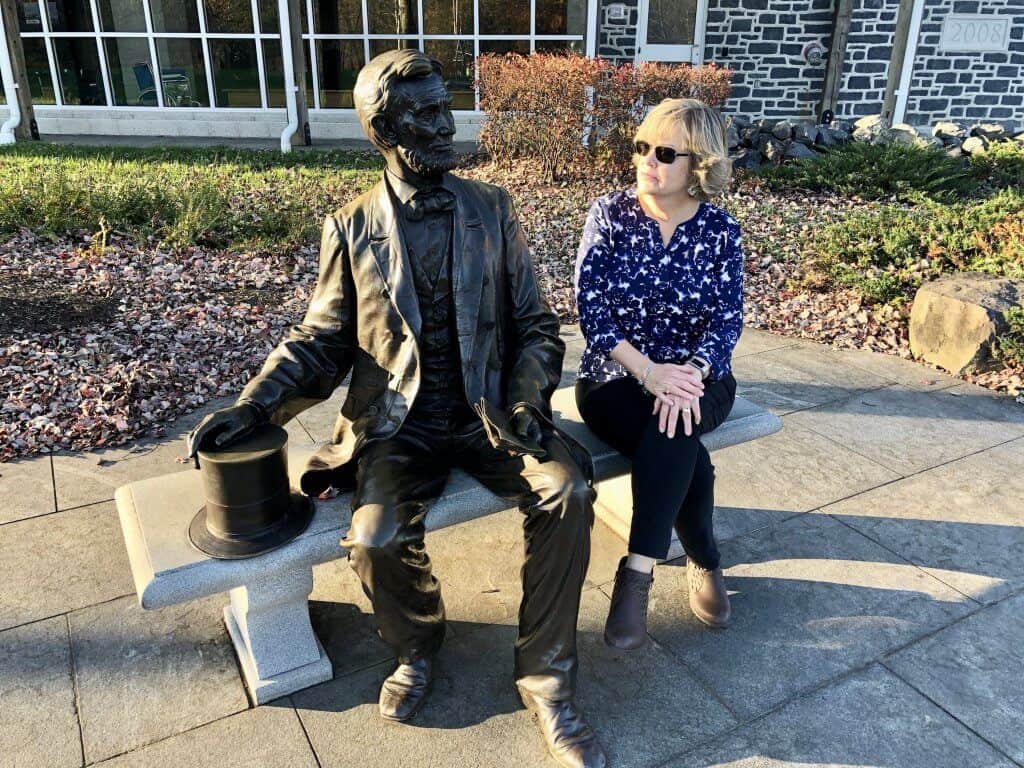
Gettysburg National Military Park Museum & Visitor Center
The Gettysburg National Military Park Museum Visitor Center is a great starting point for your visit to Gettysburg. You’ll find information guides to direct you to the plentiful experiences in town — from the battlefield to historic homes, to other fine museums, and places to eat. There’s also a highly recommended museum, movie, and cyclorama to visit. If enjoying the three options at the visitor center, expect to spend 2-3 hours here. There’s that much to see and take in.
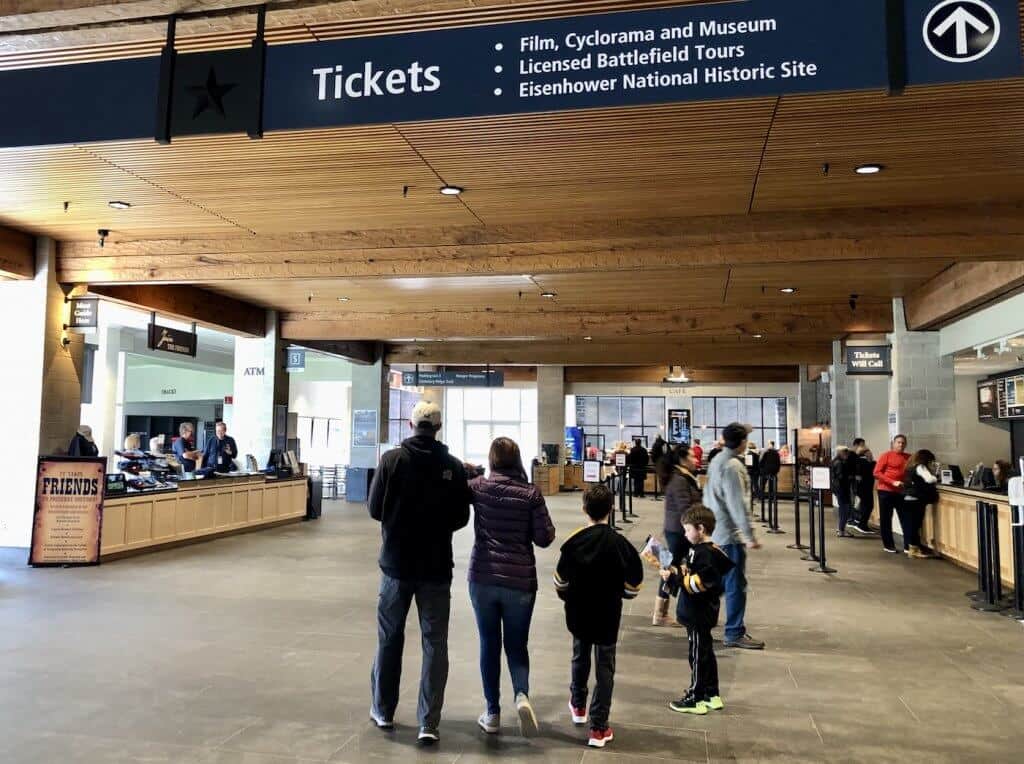
Inside this Gettysburg National Military Park Museum & Visitor Center is the:
Gettysburg National Military Museum
The museum itself houses many interesting artifacts from the soldiers — both Union and Confederate — who fought at Gettysburg. You’ll see uniforms, weapons and bullets, pocket-sized Bibles carried by the soldiers, saddles and spurs used during battle, letters written by military men and civilians, surgical instruments, and so much more. There are plenty of maps to show the progression of the troops and videos that give context to what you’re viewing in the displays.
The museum’s galleries begin with the impact and causes of the Civil War, through the Battle of Gettysburg, and end with the conclusion of the Civil War and the preservation of the battlefield.
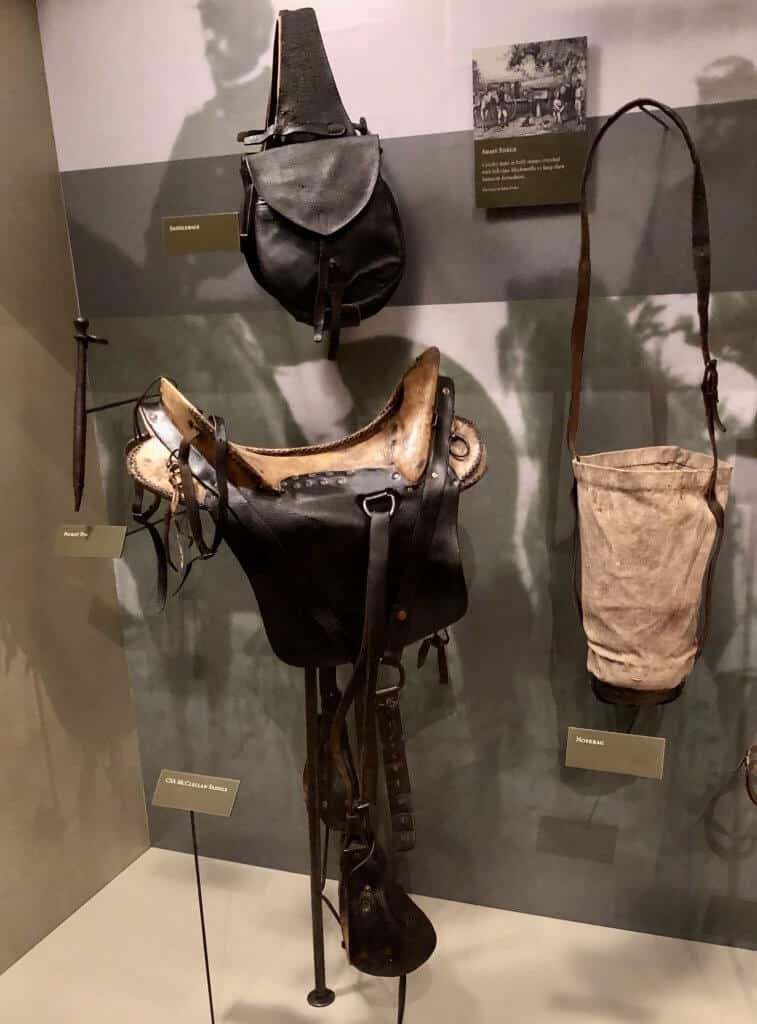
Movie and Cyclorama
A combined ticket will allow you to view the movie and cyclorama — well worth the money. Expect to spend 45-60 minutes on the movie and cyclorama experience.
The 22-minute movie provides background and perspective to the Civil War and especially the Battle of Gettysburg.
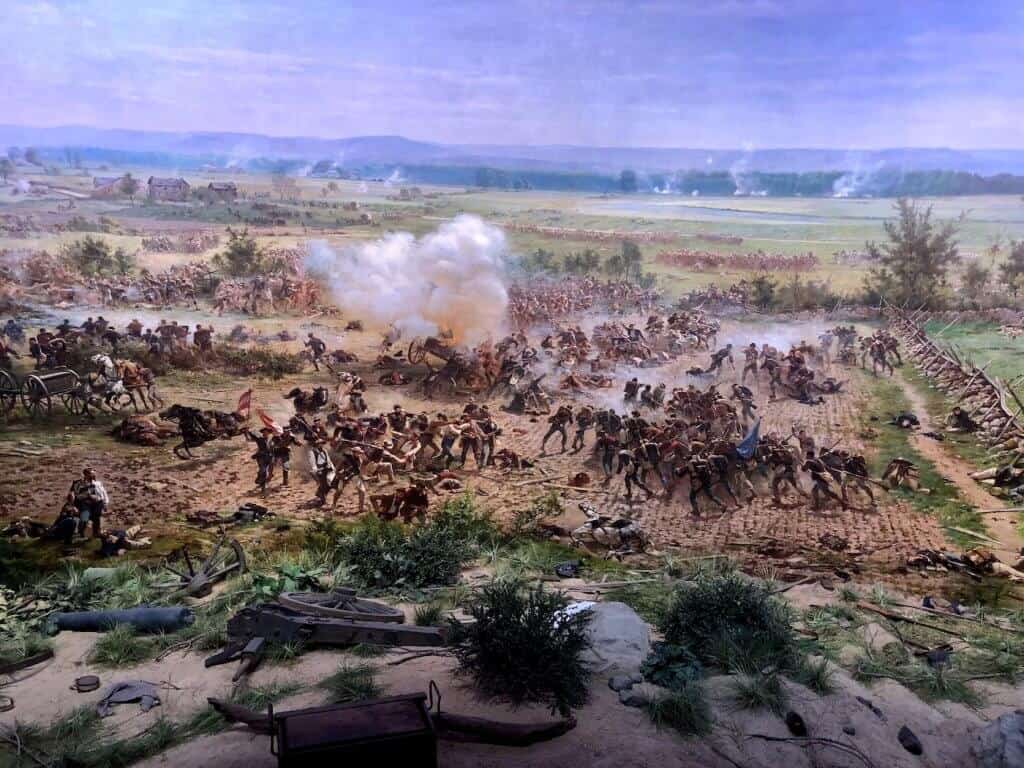
As you leave the theater, you’re directed to escalators that will take you to the cyclorama. The cyclorama is actually a huge (42 feet high, 377 feet long) oil painting completed in the late 1800s depicting Pickett’s Charge. You stand on a round platform that is encircled by an enormous oil painting. Between you and the painting are props like rocks (to extend a stone wall that’s painted on the canvas), shrubs, or tents that help bring dimension to the painting itself. The exhibit also features narration and sound effects.
What is a cyclorama?
I had no clue before visiting, but a cyclorama is a painting depicting a scene — in this case, Pickett’s Charge. Cycloramas were popular before the advent of movies and television. The idea was to put viewers in the middle of the action that’s shown in the painting.
Also in the visitor center are:
Ancestry Search
Think you may know of a family member who served in the Civil War? There’s a bank of computers that visitors can use to search various databases to locate ancestors who may have served in the Battle of Gettysburg and other Civil War battles. Also, there is a guide in this area to help visitors navigate their online searches.
Walking Tour of Gettysburg
Also in the visitor center is an information desk for Destination Gettysburg, a marketing organization that features places to visit, stay, and eat in Gettysburg and the surrounding region.
They have self-guided walking tours of the town itself. The walking tour will take you down the streets and past historic buildings of downtown Gettysburg. You can stop in some of the houses and museums to learn more along the way.
Eisenhower National Historic Site
The Eisenhower National Historic Site is the home and grounds where President Dwight D. Eisenhower and his wife, Mamie, lived in their later years. They used this farm as a retreat from the goings on in Washington, D.C., they welcomed world leaders here, and they moved here when he retired. It is located next to the Gettysburg battlefield.
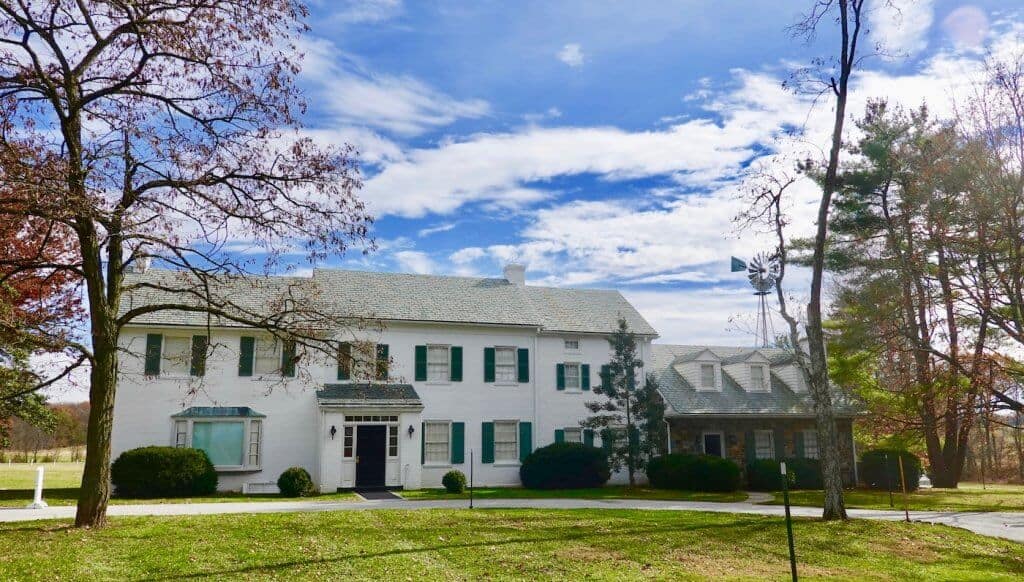
What makes this an interesting place to visit is that much of the grounds are as they left it — with their furnishings and vehicles. As you walk through the house, you gain a sense of what life was like for them in the 1950s as they relaxed to watch the evening news or read the newspaper in the family room. You will quickly learn that Mamie Eisenhower adored the color pink — as a quick glimpse into her bathroom will show you.
There is a guided tour through the home and self-guided walking tours through the grounds (putting green, gardens, guest house, and garage), the farm, and the skeet range.

To visit the Eisenhower farm, you must purchase tickets at the Gettysburg National Military Park Museum & Visitor Center and take the shuttle from the visitor center to the farm. You cannot drive to the Eisenhower farm yourself. You may purchase your tickets online ahead of time or on the day of your visit; be aware that during busy times of the year, the shuttles can fill up fast.
Gettysburg National Cemetery
The Gettysburg National Cemetery is the final resting place for 3,555 Union Civil War soldiers and the spot where President Lincoln delivered his famous Gettysburg Address. Interestingly, there are the graves of other soldiers and veterans of wars since the Civil War — including the Vietnam War. Pick up a guide for a self-guided walking tour of the cemetery available in the bookstore in the visitor center.
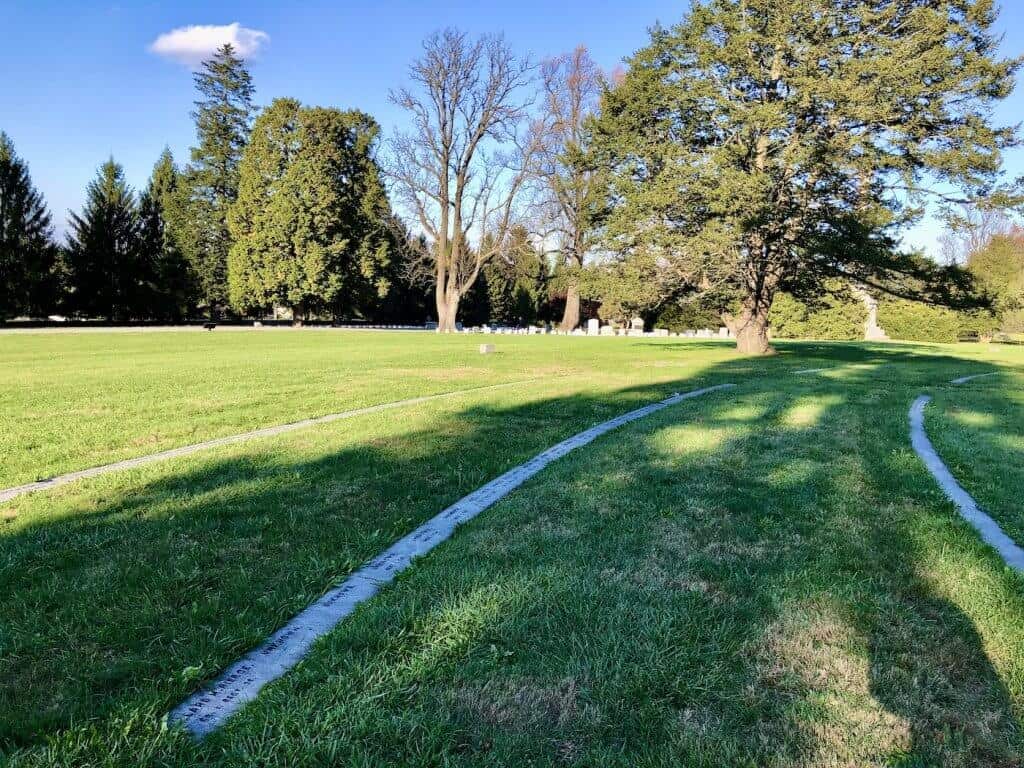
Seminary Ridge Museum & Cupola Tour
This Seminary Ridge Museum is in an original building of the Lutheran Theological Seminary that was used as an observation post for the Union military and, later, as a hospital. One floor is dedicated to the history of the battle. Another floor focuses on the wounded and dying soldiers — and the doctors, nurses, and civilian volunteers who worked to help care for the soldiers in the building. On this floor, you’ll see life-size re-creations of scenes from the infirmary or field hospital: there are rooms showing wounded soldiers being tended to by nurses, a doctor performing surgery (there were many amputations), and a volunteer reading to a wounded soldier.
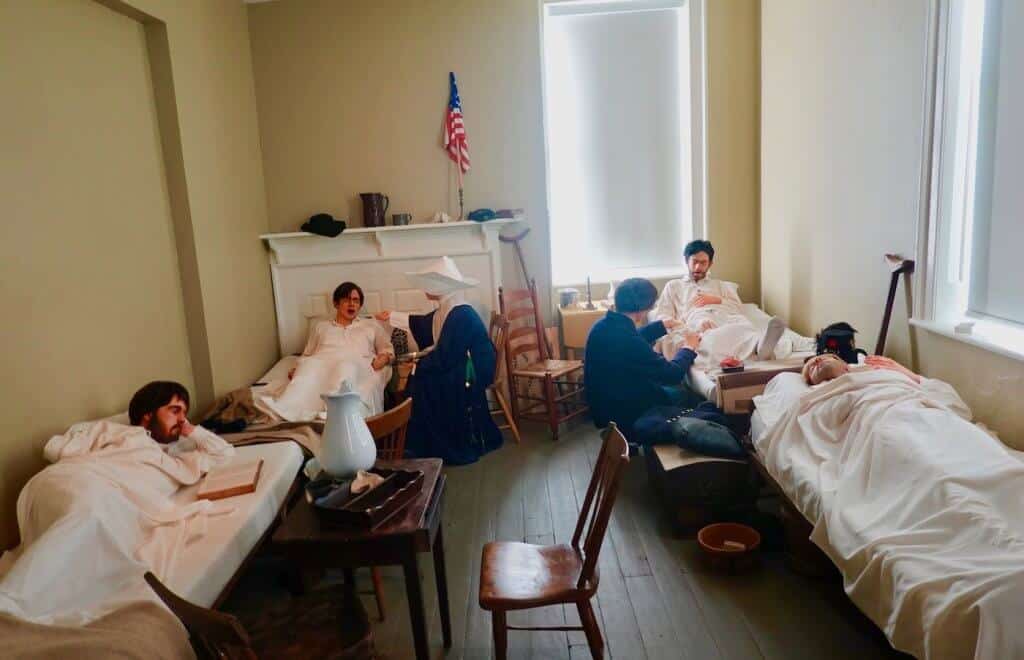
The museum offers visitors images, videos, and artifacts to build an understanding of what life must have been like for the wounded and those who cared for them.
What sets this museum apart from others is the perspective you can gain by taking a tour of the cupola. With the combined ticket (museum + cupola tour), you’ll walk up to the attic of the building and then to the cupola. Once at the apex, a guide will orient you to the land around you in all directions including the roads leading into the town and the mountain ridges that helped shield the advancing Confederates from the Union forces. Plus you’ll be standing right where Union and Confederate leaders (the Confederates did take control of this building for a short time) stood when they surveyed what was happening in Gettysburg and beyond.
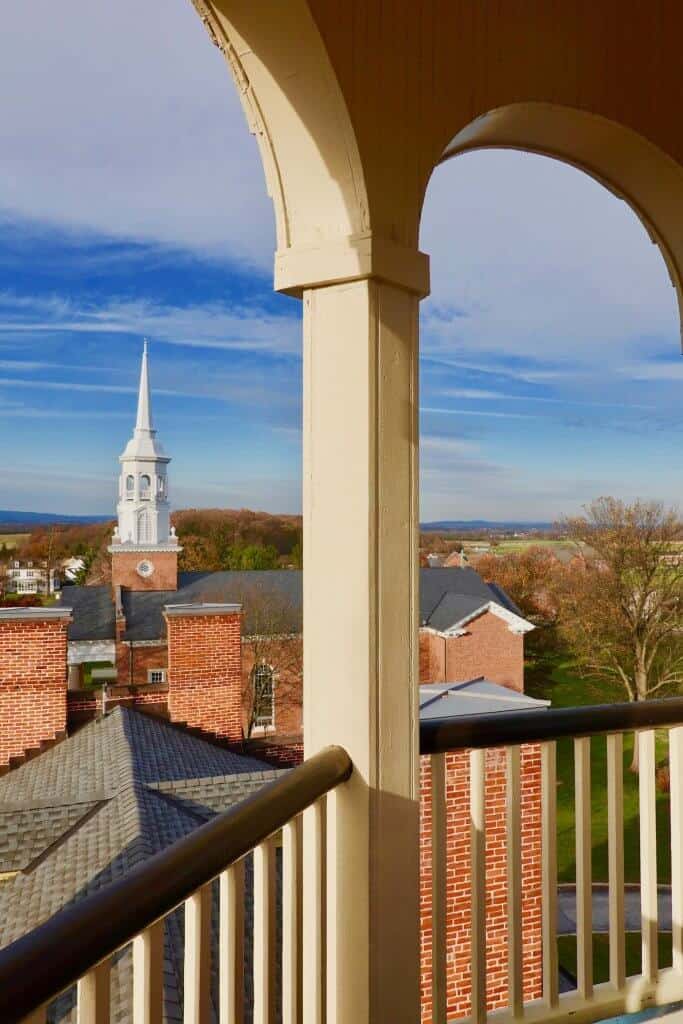
Shriver House Museum
This Shriver House Museum is a perfect place to step back in time and gain an understanding of what life was like for the locals. A costumed guide will walk you through the home and explain its history as well as tell you about those who lived here during the Battle of Gettysburg.
This was home to George Shriver who came from a wealthy family and was just 24 years old when he built the home for his wife, Hettie, and himself. George and Hettie lived here with their two daughters. Eventually, George went off to fight and left Hettie and the girls behind. Shortly after George left, Hettie and the girls left for Hettie’s parents’ home three miles away to escape the fighting that was nearing the home. After the fighting ended, Hettie and the girls returned to see what was left of their home.
As it turned out, the home had been commandeered by Confederate soldiers who sheltered there. In addition, the attic served as a base for Confederate sharpshooters. They removed some bricks and mortar from the outside wall, creating an opening from which to fire on enemies below. Today, the openings in the brick attic wall remain, so it’s easy to imagine the soldiers in action.
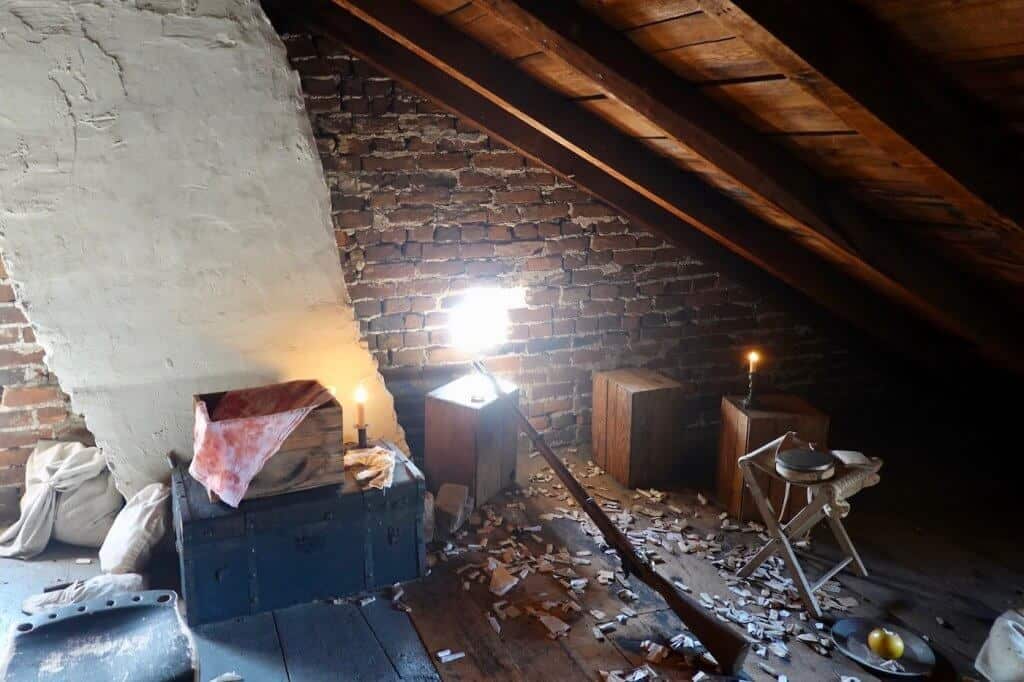
When you tour the home, you’ll see it furnished as it was in the 1860s. Although the furnishings are not the original ones, they are true to the time period and stand in for the ones on George Shriver’s original home inventory. You’ll see how it was at the time the Shrivers lived here as well as the aftermath — what it most certainly looked like when Hettie and her daughters returned after the last shot was fired on the battlefield. The re-creations (in several rooms) are very realistic and were actually quite startling and moving to see.
Jenny Wade House
Much like the Shriver House, the Jenny Wade House provides a peek into life for a family at the time of the Battle of Gettysburg. It also has guides, dressed in period costumes, to provide commentary on those who lived here (Jenny Wade’s sister’s family) and what happened one fateful day in 1863.
What makes this house notable is that it is the site of the only civilian death during the three day battle that was taking place outside. It’s called the Jenny Wade House not because Jenny Wade lived here. Instead, it’s where she happened to be when she was killed by an errant bullet while kneading bread — at her sister’s home.
David Wills House
The David Wills House, the home of attorney David Wills, is where President Lincoln stayed before delivering the Gettysburg Address. Now a museum, the home features several rooms, two of which (including Lincoln’s bedroom) are restored to their 1863 appearance.
Actually, David Wills is known for being more than the owner of the home where President Lincoln resided. A few weeks after the Battle of Gettysburg concluded, David Wills began work to create a cemetery to give Union soldiers a formal resting spot. This place, what became the Soldiers’ National Cemetery, is the area from which President Abraham Lincoln delivered the Gettysburg Address later that year — on November 19, 1863.
Other Gettysburg Diversions
There are plenty of other experiences you can have in Gettysburg. Here are a few:
- Gettysburg Heritage Center – This museum helps visitors understand the effects of the war on civilians living in town.
- Gettysburg Diorama – This museum offers a light and sound diorama show that is narrated to help visitors see the war play out before them. There are over 20,000 miniature people, cannons, horses, and buildings on display.
- Shopping Outlets – The outlets are just a few minutes from the historic spots in Gettysburg. Some people search for bargains; others welcome the respite from the grave reminders of war from visiting some of the town’s many historical sites.
Nearby Attractions
When planning a trip to Gettysburg, you may also want to consider other great sites in Pennsylvania:
- Bushkill Falls, Poconos
- Colonial PA Plantation, outside Philadelphia
- Covered Bridge Tour of Bucks County
- Covered Bridge Tour of the Lehigh Valley
- Hawk Mountain Sanctuary, Lehigh Valley area
- Hickory Run State Park, Poconos
- Housenick Park, Lehigh Valley
- Jacobsburg State Park, Pocono area
- John Heinz National Wildlife Refuge, outside Philadelphia
- Museum of the American Revolution, Philadelphia
- National Museum of Industrial History, Lehigh Valley
- Philadelphia Self-Guided Walking Tour
- Philadelphia: Fairmount Park’s Unique Colonial Mansions & Their Stories
- Best Things to Do in Philadelphia
- Pittsburgh and Southwestern Pennsylvania Guide
- Promised Land State Park, Poconos
- Ricketts Glen State Park, Poconos
- Ridley Creek State Park, outside Philadelphia
- Tyler State Park, Bucks Country
- Valley Forge National Historical Park, outside Philadelphia
- Washington Crossing National Historic Park, outside Philadelphia
Final Thoughts
Gettysburg is located in a beautiful rural area of southern Pennsylvania just above the Mason-Dixon line. And, of course, it’s rich in American history. The town thrives on tourism, and they have done an admirable job of presenting history from different angles — the soldiers, obviously, but also the townspeople. Gettysburg warmly welcomes visitors and it has plenty of things to do and see. We’ve visited a number of times over the years, and there’s always something new we discover on each trip. My husband, Pop, wrote his reflections after visiting the Gettysburg battlefields.
When visiting, we found that we gained a well-informed perspective on the Battle of Gettysburg by visiting more than one place while in town.
We suggest that you visit:
- the battlefield to see where the action happened,
- a museum or two to learn even more and view important artifacts from that time period, and
- some historic homes to learn more about the townspeople who lived through the battle.
When traveling to the mid-Atlantic states on the east coast, consider the 86-mile drive from Washington, D.C., or the 140-mile drive from Philadelphia to Gettysburg. A long weekend would be the perfect amount of time to take in the highlights of this Pennsylvania city.
Two eateries that are worthy of a stop are Food 101, a small restaurant in town that serves delicious lunch and dinner dishes, and Dobbin House Tavern, where the ambiance (century’s old tavern setting downstairs) takes you back in time while you relax over a meal.
To make sure you remember all the great experiences on your next trip — be it Gettysburg or somewhere else — take lots of pictures and create a photo book of your journey when you return home. You’ll be glad you did!
Comments?
Feel free to share your experiences and/or suggestions for others who might be contemplating visiting the Gettysburg area. 🙂

